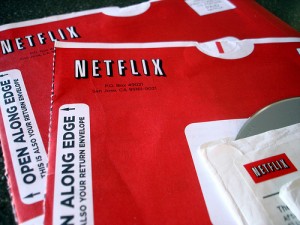Buying generic or store-brand items is one of my favorite ways to keep grocery costs down. But I’m frugal, not cheap, which means I won’t sacrifice quality completely just to save a few cents.
Generics have come a long way since I was a kid. Our grocery store even stocks a variety of low-cost organic generics. But there are still many generic products that, in my opinion, aren’t worth the pennies it cost to make them, let alone 75% of what I’d pay for a quality name-brand item.
Finding quality generics is a game of trial and error. The only way to know for sure if a generic is worth buying is to try it for yourself. There are some general rules I’ve found that can make the process easier, though.
Always
Staples – Milk, eggs, sugar, flour, tea, bread, butter, and other basics cost 25-40% less for generics, and you’ll never know the difference.
Canned fruits & vegetables – Many times the store-brand versions are even higher quality than their name-brand counterparts.
Medicine – The active ingredients are the same, but the cost difference is mind-boggling. Acetaminophen, ibuprofen, and all of the various cold medicines are as much as 75% cheaper in generic.
Tony takes a Claritin knock-off for his seasonal allergies, and it costs almost 1/4 of what we’d pay for Claritin. Seriously, 30 pills for $4 compared to 30 pills for $17 in the name brand. The store brand works just as well. The same is true for prescription medications. Always ask for the generic, and make sure your doctor writes substitutions into the prescription.
Sometimes
Cleaning products – Store-brand glass cleaner and bleach work just as well as their name-brand counterparts, but I notice a dip in quality for heavy-duty cleaners like shower and tub cleaners.
Cereal – Almost all of the major brand-name cereals come in a generic version, and we’ve only tried a handful that weren’t very good. At half the price of name brand, it’s always worth it to try.
Hygiene products – We buy name-brand toothpaste and deodorant, but Tony’s shampoo is always generic. This is one of those areas where you really have to try the product to know for sure.
Remember, if the product is low quality or doesn’t do its job, you’re not really saving money by buying the generic — you’re just throwing money down the drain on a low quality product.
Never
Dog food – It’s all our dog eats, so we spring for the good stuff. On the spectrum of dog food brands and prices, the food we buy probably falls somewhere on the upper side of the middle. It’s not the super expensive stuff, but definitely not super cheap or generic.
Peanut butter – We’re both picky about peanut butter, and ever since we discovered Skippy Natural we’ve been hooked.
Paper towels & toilet paper – I’ve experimented with generics, and the result wasn’t pretty. We use coupons and buy in bulk to reduce the cost.
Coffee – We brew a half pot every morning, and we each drink a cup. We’ve tried to buy store-brand to save money, but it’s like drinking mud. We don’t go all out and buy Starbucks, but we spring for a cost-effective name brand and save money by buying in bulk and limiting our consumption.
What are your rules for buying generic?

